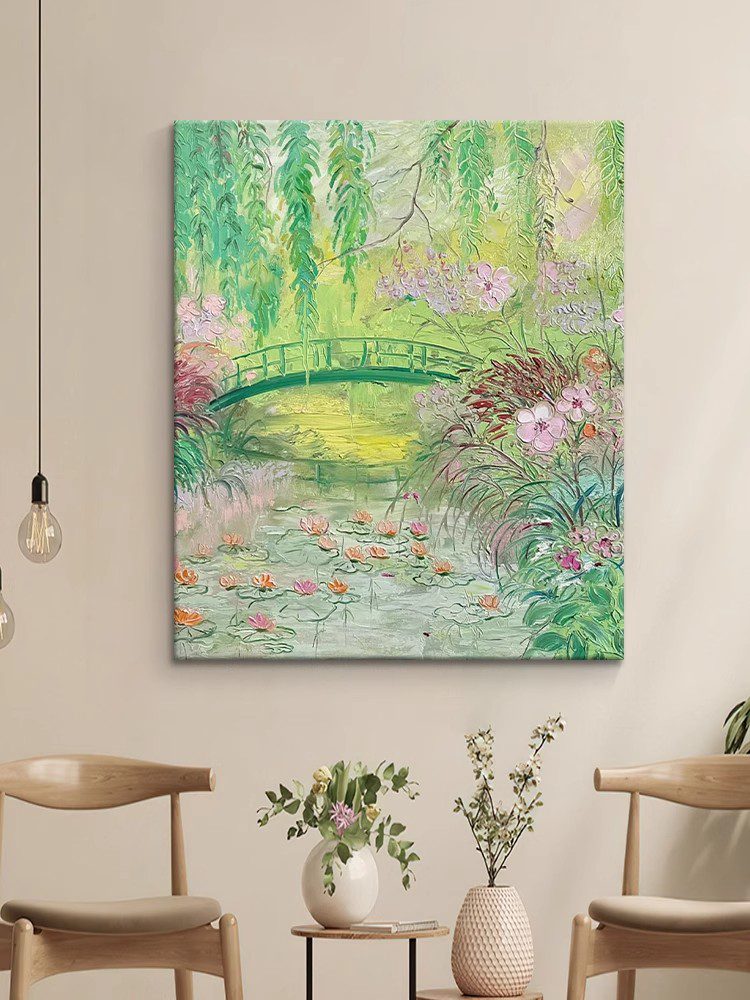Expressionist hand-painted oil paintings take the strong expression of subjective emotions as their core. Through the exaggeration and deformation of elements such as color, brushstrokes and composition, they break through the traditional realistic framework and form a unique artistic language. The following analyzes its characteristics from multiple dimensions:
First, the extremization of emotional expression
Expressionist oil painting places the artist’s inner experience at the forefront and conveys a strong emotional impact through visual language. For instance, Munch’s “The Scream” uses distorted characters and a blood-red sky to depict the struggle of human beings in anxiety and fear. The characters in the picture have no definite physical features. They are presented merely in a symbolic “image”, and through exaggerated postures and expressions, they convey profound loneliness and despair. This kind of emotional expression is not only a release of personal experiences, but also a reflection of the spirit of The Times.
Second, the subjectivity and symbolism of color
The colors in expressionist oil paintings have broken away from the imitation of nature and become the direct carriers of emotions and thoughts. Artists often use unnatural color combinations and enhance the visual tension of the picture through the application of contrasting colors and complementary colors. For instance, in “The Scream”, Munch uses blue-purple to treat the bright parts of the clothes, which forms a sharp contrast with the orange spots. This contrast of colors not only intensifies the atmosphere of anxiety and fear but also symbolizes the inner conflicts and struggles of human beings. Color here is no longer an objective tool for depiction, but a concrete expression of the artist’s subjective emotions.
Third, the roughness and strength of the brushstrokes and texture
The brushstrokes of expressionist oil paintings are usually rough, free and full of a sense of power. The artist leaves obvious texture traces of the pigment on the canvas through thick coating techniques or direct painting. For instance, in Kirchner’s works, the brushstrokes are casual yet dynamic. Through triangular color blocks and geometric compositions, a unique decorative planar effect is presented. This brushstroke not only enhances the dynamism of the picture, but also reflects the artist’s inner tension and unease. The application of texture further enhances the materiality of the picture, enabling the audience to sense the emotional fluctuations of the artist during creation through a tactile visual experience.
Fourth, the distortion and deformation of composition and form
Expressionist oil painting breaks the perspective and proportion rules of traditional painting and enhances emotional expression through distorted and deformed forms. For instance, in Hecker’s works, characters are often depicted as haggard and depressed. The use of square or sharp-angled shapes conveys intense emotions and reveals the complex psychology of the characters. In terms of composition, artists often employ asymmetrical layouts or cropped compositions, which weaken the stability of the picture and create an atmosphere of unrest. This kind of formal distortion and deformation is not only a reinterpretation of the objective world, but also a direct presentation of the artist’s inner world.
Fifth, the critical nature and social concern of the theme
Expressionist oil paintings often focus on social and cultural issues and express criticism of war, poverty, disease and social injustice through art. For instance, Kirchner’s “The Street” depicts the loneliness and alienation of people in modern cities with fragmented lines and tense brushstrokes. This theme choice not only reflects the artist’s profound reflection on reality, but also embodies the social responsibility of expressionist art. Through their works, artists attempt to awaken the audience’s attention to real-world issues and trigger deep thoughts on humanity, life and society.
Sixth, the challenge and innovation to traditional aesthetics
Expressionist oil painting challenges traditional aesthetic standards. It no longer pursues perfect form and harmonious proportion, but emphasizes individual subjective experience and emotional expression. For instance, Kandinsky’s works create a musical sense of rhythm and cadence through the mutual combination of geometric shapes and different colors. This innovation in form and color not only expands the expressiveness of oil painting but also opens up a new path for the development of modern art. Expressionist artists redefined the essence of art through their works, making it a free expression of emotions and thoughts.
